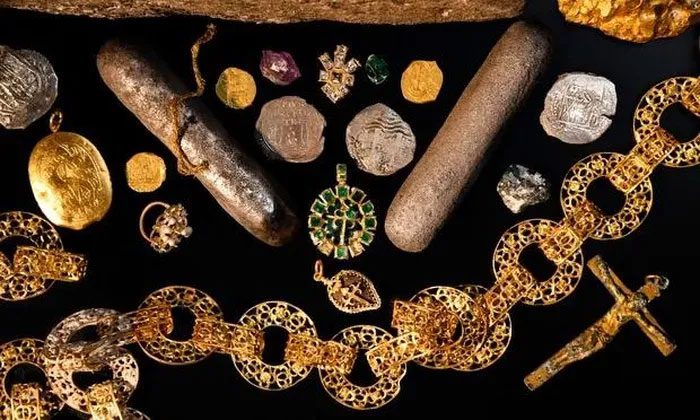Archaeologists have recently discovered numerous artifacts in the waters off the Bahamas, believed to belong to a treasure-laden Spanish ship that sank over 350 years ago.
The ship Nuestra Señora de las Maravillas (translated: Our Lady of Wonders) sank in the waters west of Little Bahama Bank, more than 70 km from the mainland, but the newly discovered treasures are scattered over an area spanning more than 13 km, Guardian reported on July 31.
The company Allen Exploration, along with marine archaeologists and divers from the Bahamas and the United States, has been granted permission by the Bahamian government to explore the Maravillas site for scientific purposes. Additionally, the expedition team has committed to displaying their findings in a newly opened museum in the Bahamas.
The expedition has uncovered many valuable artifacts, such as a finely crafted gold inlaid necklace believed to be intended for wealthy nobility, a gold pendant, and an Indian bezoar stone that was highly valued by Europeans for its supposed healing properties.

Gold, jewelry, and coins discovered by the expedition team. (Photo: Guardian).
Dr. Sean Kingsley, a British marine archaeologist, noted that such “wonders” are particularly impressive because they are located in a remote area and buried beneath thick layers of sand. He stated: “This is a successful archaeological campaign at a very significant site.”
The ship Maravillas, named after a 13th-century sculpture in a monastery in Madrid, set sail from Havana heading towards Spain. Onboard were treasures from the Americas, royal cargo, and goods from ordinary citizens.
However, around midnight on January 4, 1656, the ship sank after hitting a reef. Only 45 out of the 650 people on board survived, with many falling prey to sharks.
The expedition team is also collecting data on the condition of coral reefs, seabed geology, and plastic pollution to understand the relationship between archaeology and the marine environment.





















































